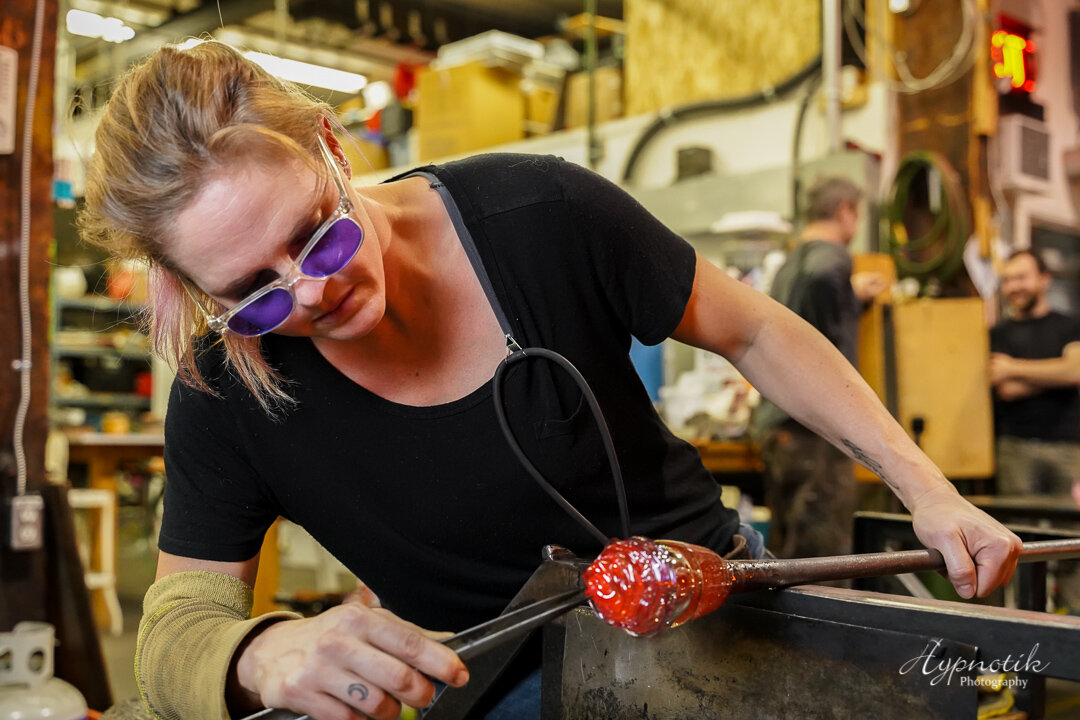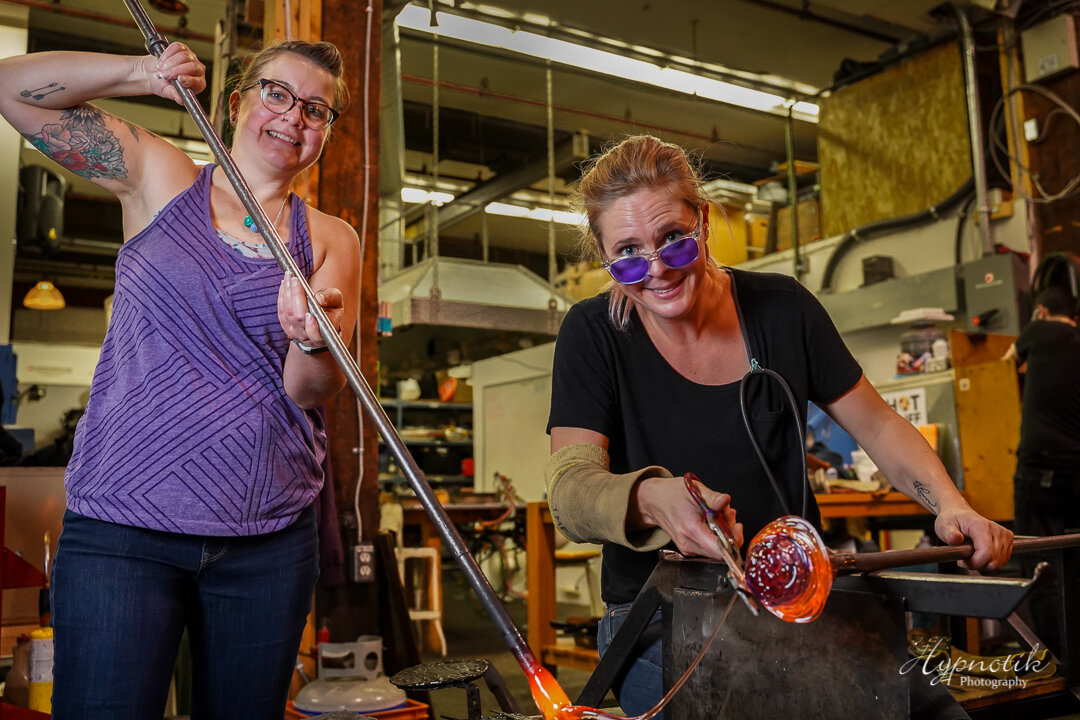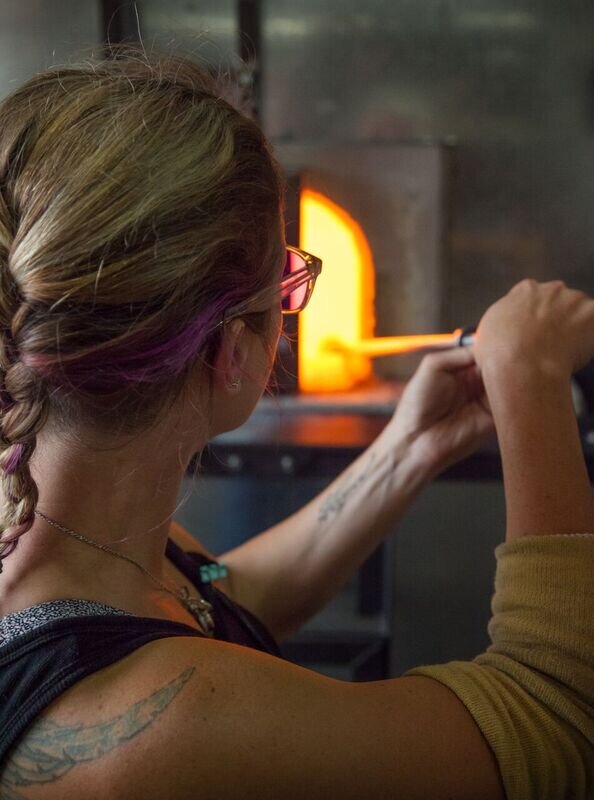the artist and her craft
The thoughts of a glassblower
I wear many hats, but glassblower has been a long running favourite.
I am a professional glass blower living just outside of Vancouver BC. I love the heat, I love the smells (is that weird?), I love the sounds, I love the challenge and the process, I love the danger, I love the failures and the successes. I am at peace in the glass studio. IT SETS MY SOUL ON FIRE. I have followed this passion for over 20 years and have been fortunate enough to work in many different studios as a production glass maker, designer, technician and manager. Tara Blown Glass was the beginning of my own work, a production line that can keep my passion thriving and enable me to be there for my young children through self employment. With life and glass, I am driven by the idea that happiness can be chosen, that a sense of humour brings about a positive perspective and the people and the environment we surround ourselves with contribute to our well being. I strive to evoke positive vibes through bright colours, functionality, simplicity, and often times healing pieces. I hope those vibes shine thru.
my favourite things
My village of supportive family, friends and colleges
Good food that tastes great and nourishes the body
A lighthearted attitude, a positive outlook and a sense of humour
Colour! The whole rainbow–all the time!
Tools of the trade
Left pretty much unchanged since first century, glassblowing tools are simple and few. These include a blowpipe, punty, bench, marver, blocks, jacks, paddles, tweezers and a variety of shears. However, there are a few intangible and essential pieces – gravity, centrifugal force, and well-developed lung-power!
Understanding glassblowing
Tara begins each piece by inserting a preheated blowpipe into the furnace to gather clear molten glass. The glass is rolled on a steel table called a marver to form a cylindrical shape. Colored glass powders or pieces are picked up and combined in a similar manner.
Keeping the glass in constant motion, one hand turns the pipe while the other shapes it using a wooden block, newspaper or tweezers. The glass cools throughout the process becoming unworkable and is reheated using a blow torch or more commonly in large furnace, called the glory hole, to keep it above 1000 degrees Fahrenheit.
After the final shape is formed, the piece is placed in a temperature-controlled kiln to slowly cool revealing it's final colour.
















